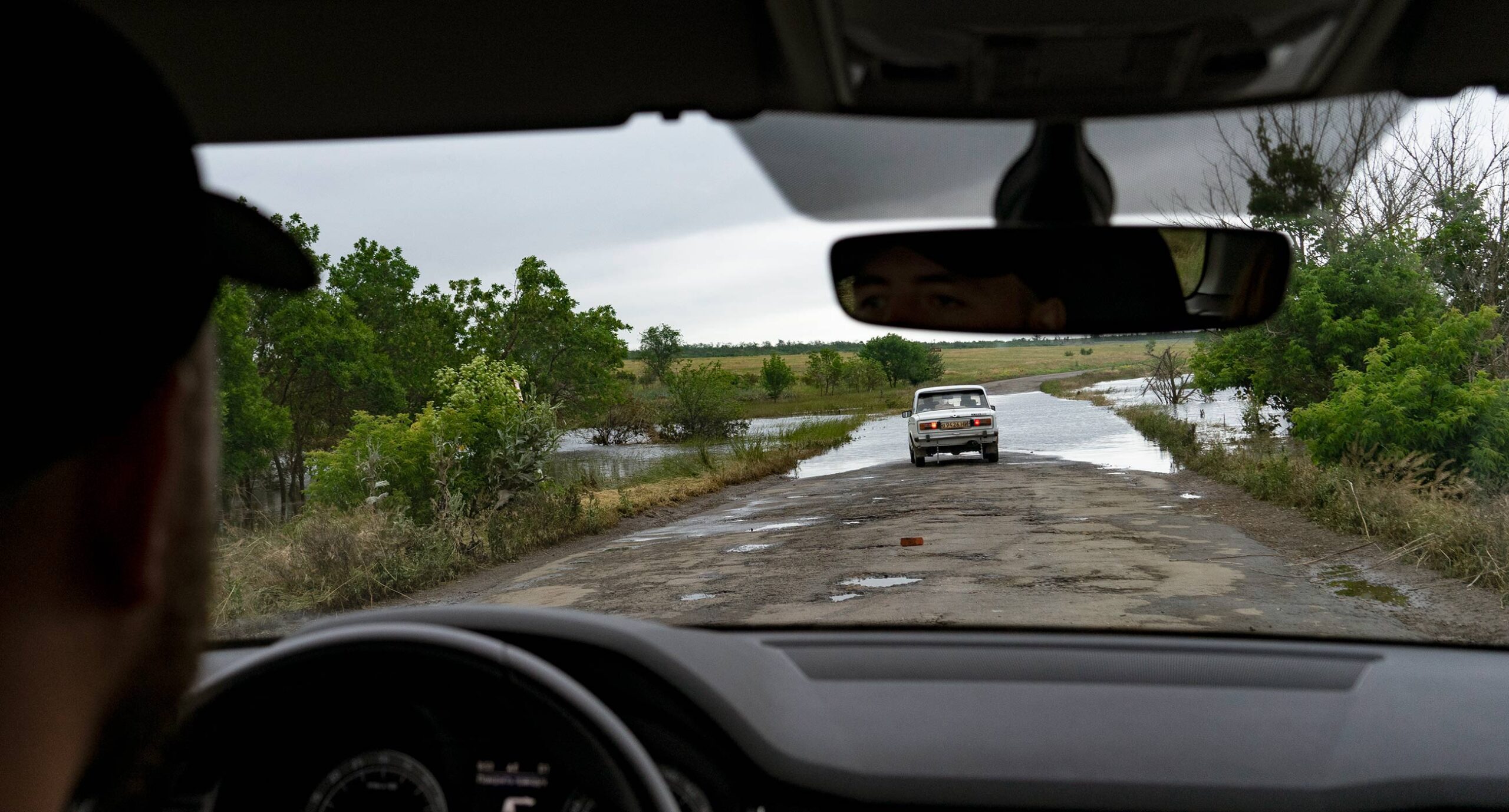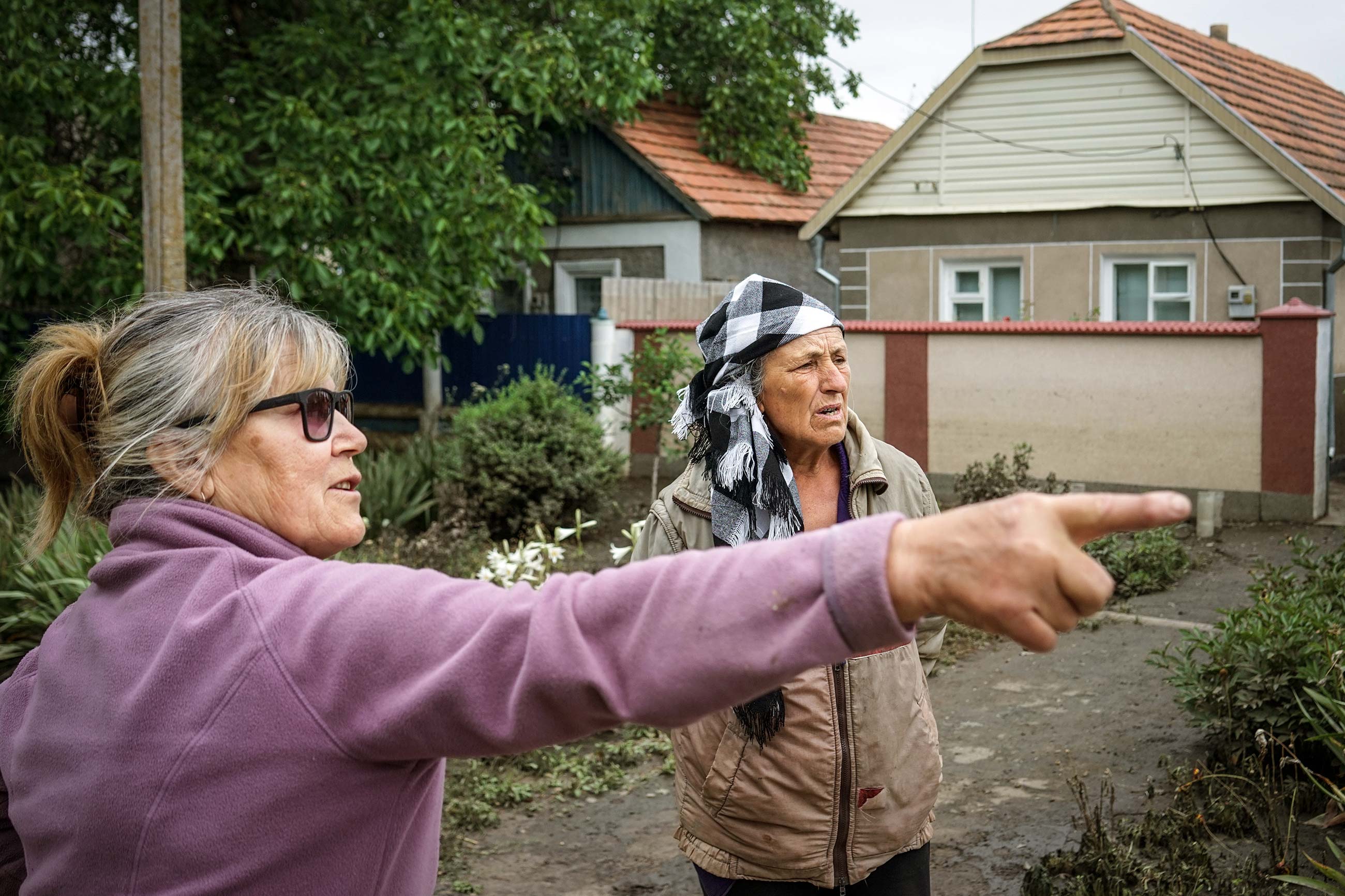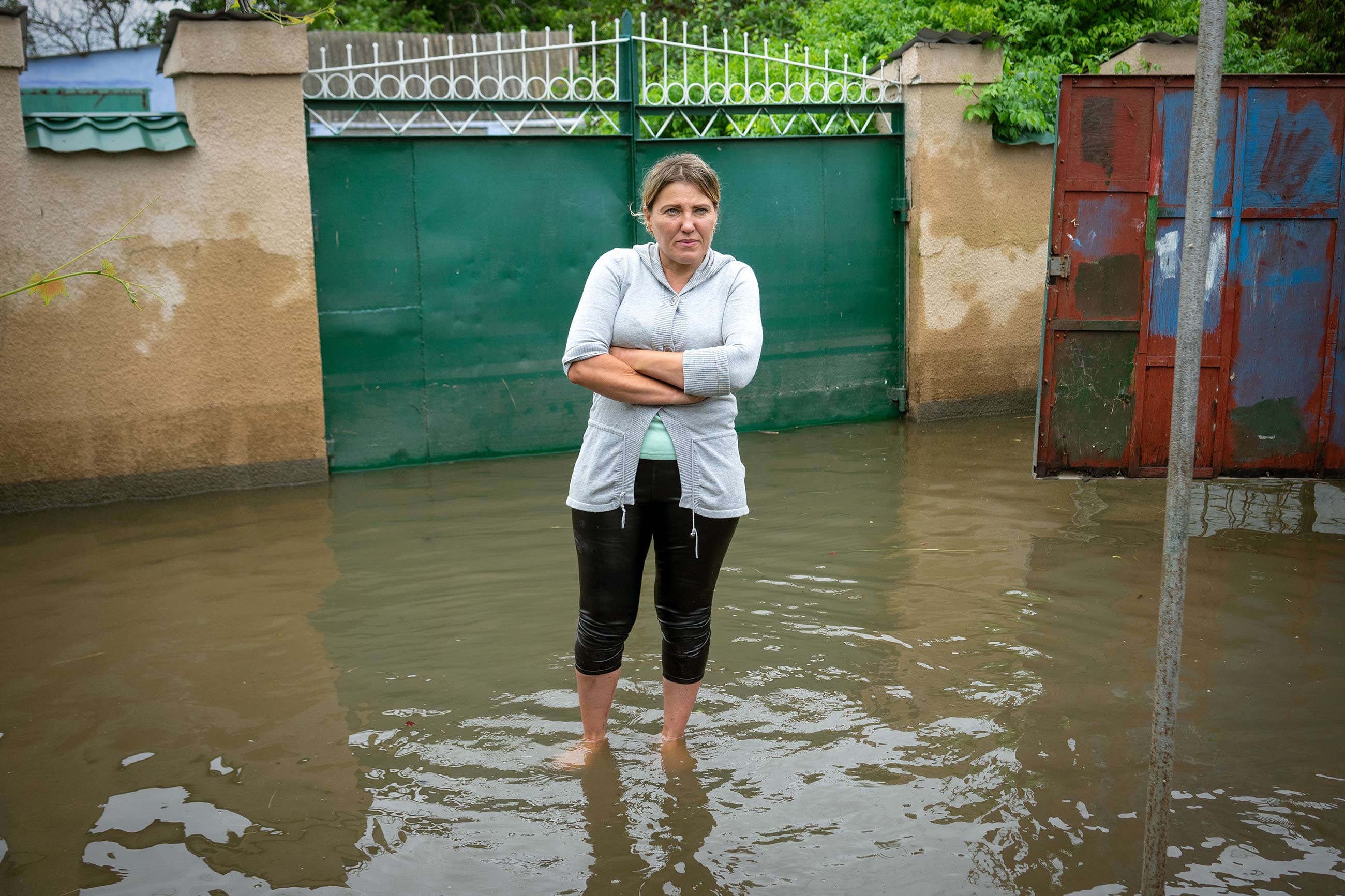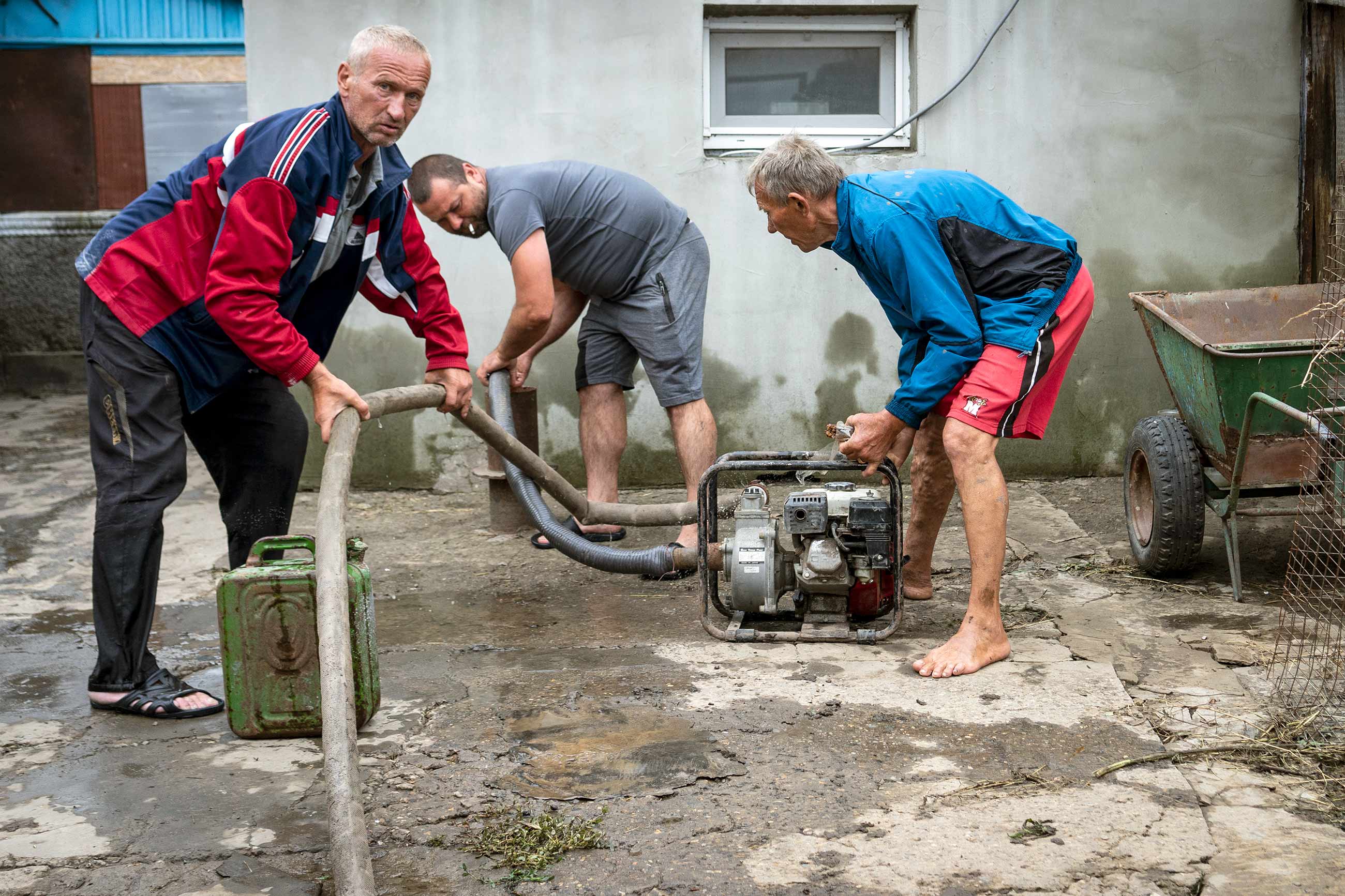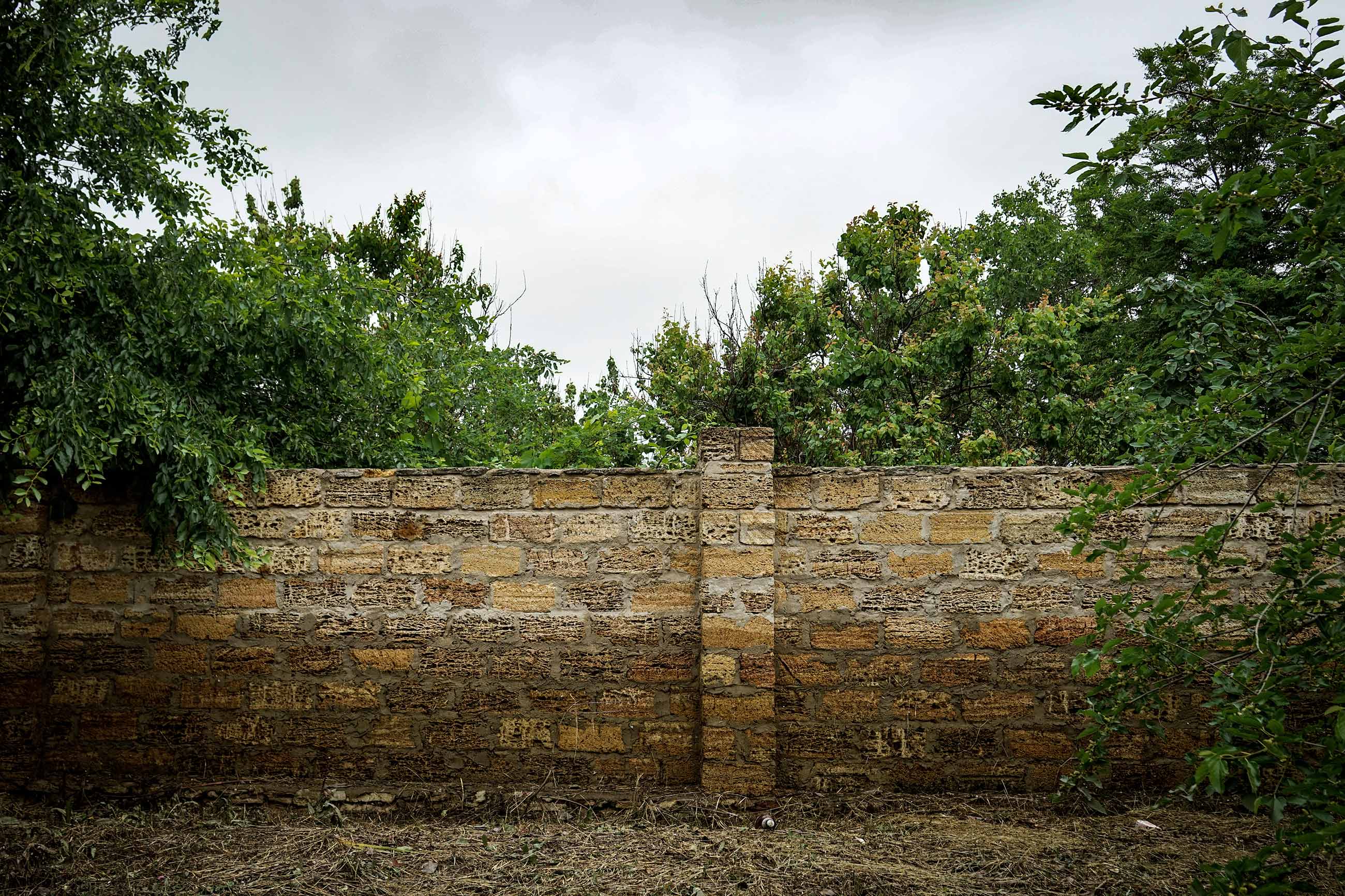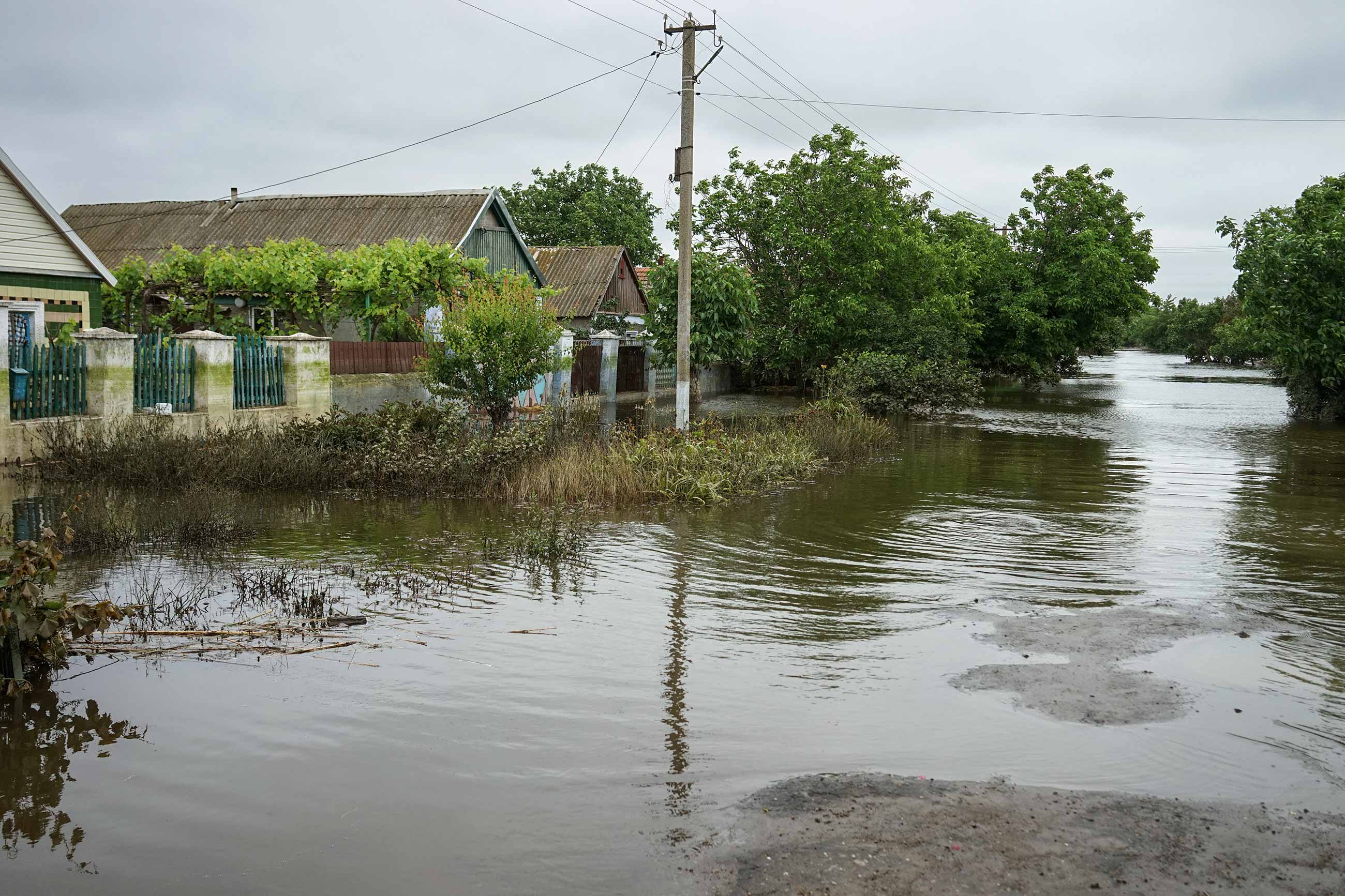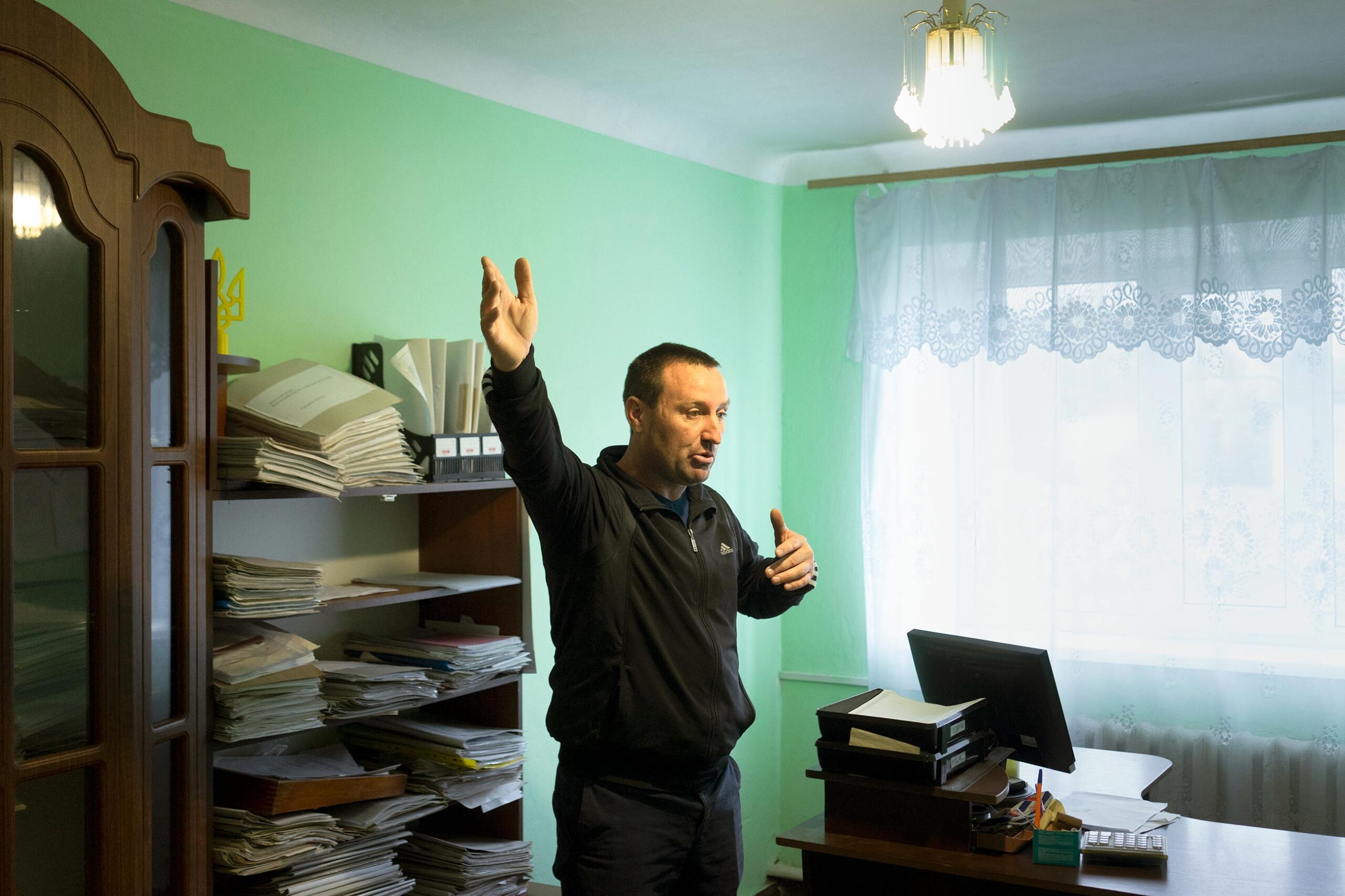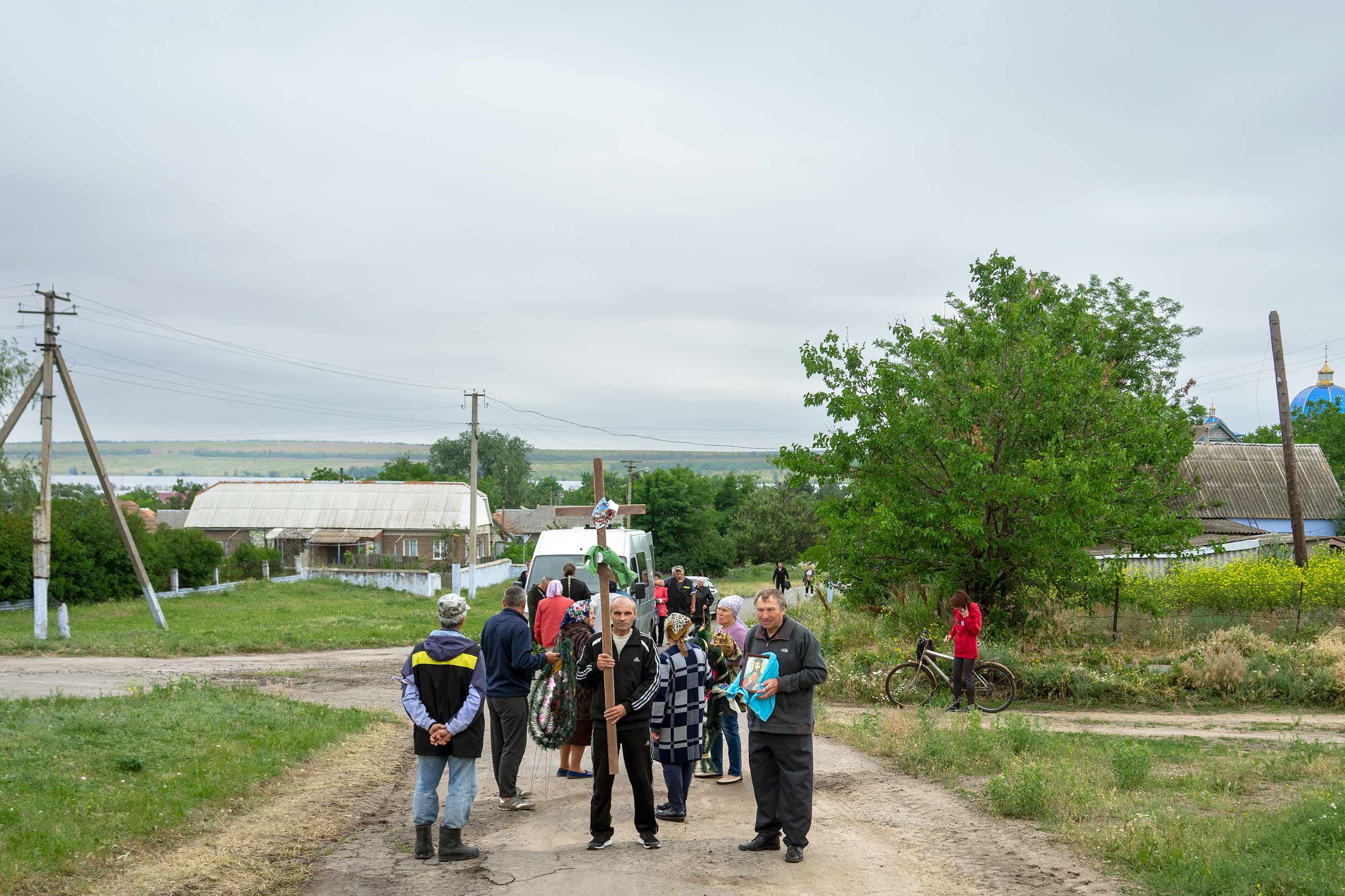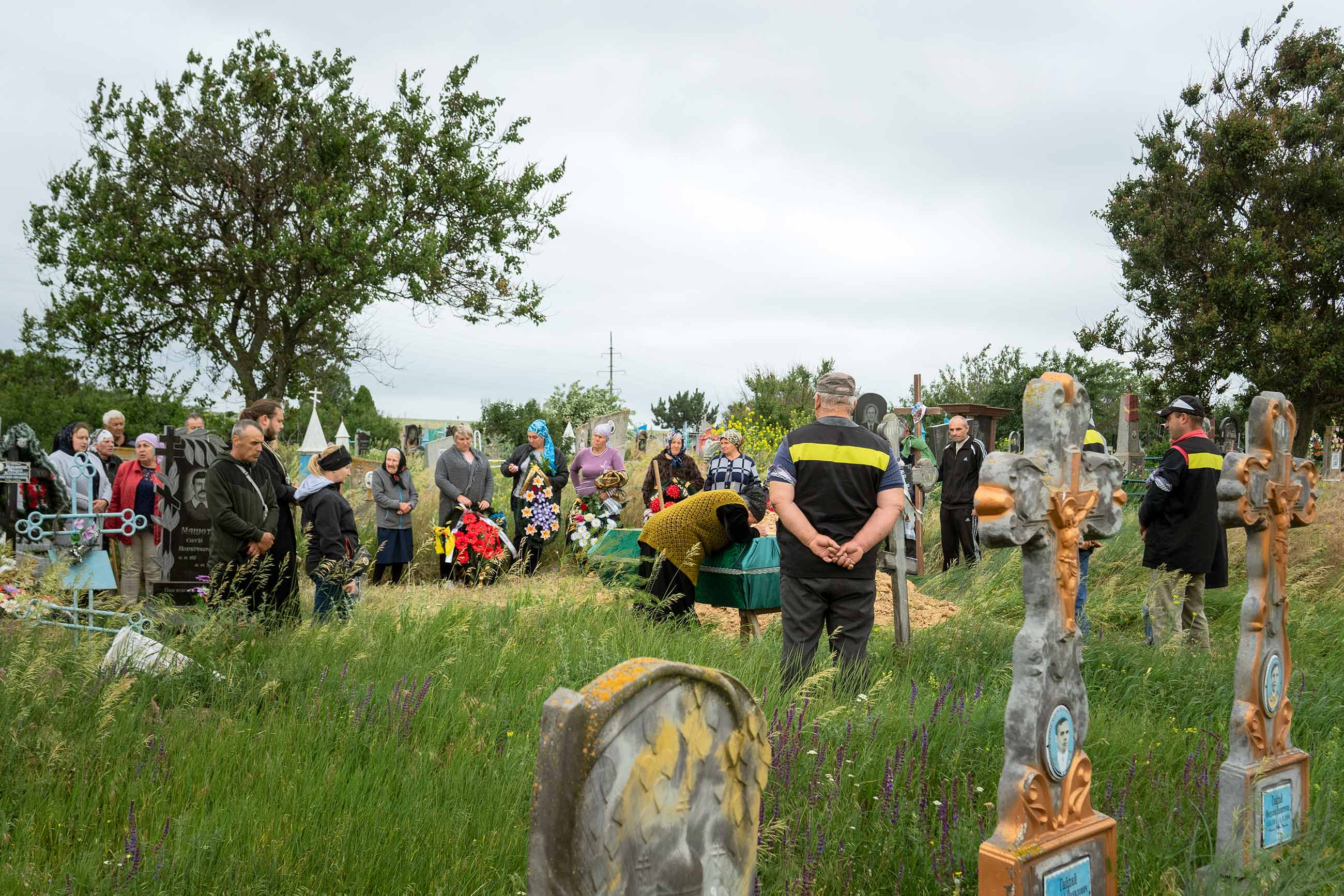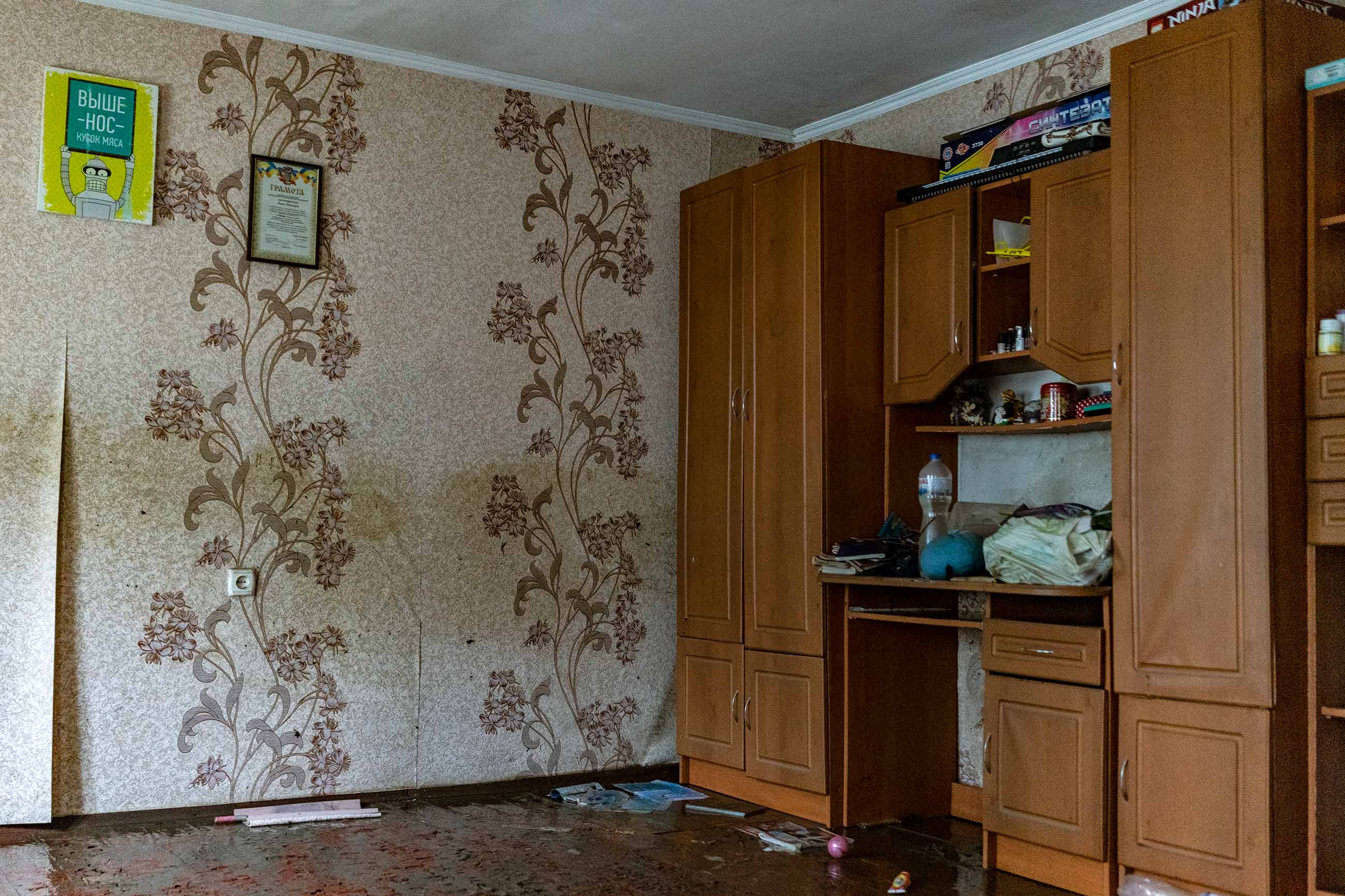The explosion of the Kakhovka hydroelectric power plant by the Russian occupiers led to catastrophic consequences. The water flooded dozens of cities and towns in southern Ukraine, while to the north of the reservoir, it subsided, exposing the river bottom. Zaborona’s editor-in-chief Kateryna Serhatskova visited flooded villages in the Mykolaiv region and saw houses built of clay melting in the water, and attended the funeral of a man who died in a flood in his sleep.
“We have been under occupation for nine months, we have not left anywhere, so it would be better if the orcs killed us,” Natalia cries out. An elderly woman, she is dressed in a warm jacket and shorts and wears wet sneakers.
Natalia takes us inside her house in the village of Vasylivka, Mykolaiv region. The walls, furniture, things — everything is wet. The plaster is sticking off the ceiling and falling bit by bit to the slippery floor. The air in the house is so warm and heavy that it feels like you are standing in a subtropical forest, where you can’t breathe fully. A few more days and the fungus will spread throughout the house.
The big water did not come to the Mykolaiv region immediately. When the Russian invaders blew up the dam in Nova Kakhovka on Tuesday, June 6, the water rushed downstream, flooding Oleshky, Kardashynka, Hola Prystan, and other villages along the left bank of the Dnipro. On Wednesday, it began to flood Kherson. Later, the water spilled into other rivers and began to flood settlements far from the Kakhovka reservoir. This is how it reached small villages along the Inhulets River in Snihurivska, Shyrokivska, and Horokhivska communities in the Mykolaiv region.

Natalia (center) in front of her house in the village of Vasylivka. Photo: Ivan Chernichkin / Zaborona
Like Kherson, Snihurivka and the villages around it have been under Russian occupation for almost nine months. It was through Snihurivka that people traveled to the territory controlled by Ukraine — there was a Russian checkpoint where they conducted so-called “filtration“: they checked Ukrainian citizens’ phones, undressed them to see their tattoos, and searched their belongings. Suspicious people were sent to the basement of the FSB.
Houses are melting underwater
Lilia, 40, lived on Shkilna Street with her two children and husband. When the full-scale invasion began, her husband went to serve as a volunteer in the Ukrainian Armed Forces. Liliia says he had a heart valve replacement and was unfit for service, but he hid his documents and did not tell anyone about his illness. On September 27, during a counteroffensive, he was killed before he could see his village liberated.
Lilia’s house stands in the water, as if in the middle of a river. She walks through the cold water barefoot and does not pay attention to the fact that her leggings are half-soaked. For the second day in a row, her neighbors have been trying to pump out the water from the basement and yard with a special pump, but there is too much of it. The woman takes us inside the house and touches the wall. A light touch causes part of the plaster to crumble.

Lilia in the yard of her own house. Photo: Ivan Chernichkin / Zaborona 
Local residents pump out water from Lilia’s yard. Photo: Ivan Chernichkin / Zaborona
The houses in Vasylivka are built mostly of brick and clay. The water soaks the clay, and the bricks start to collapse. Ivan Haidush, the headman of Vasylivka and two other neighboring villages, tells us that because of the way the houses were built, many of them are gone — they have been submerged. Those that survived may soon collapse.
“The basements here are built under the house, and the water got in and the house is collapsing,” he says.
Lilia says that after Kherson and Snihurivka were liberated from the occupiers, she began to repair the house, as it had been damaged by shelling. Now, after the flooding, it has lost its meaning. She does not understand whether her house will survive the flood at all.

A trace of water on the fence shows the level of flooding on Shkilna Street in the village of Vasylivka. Photo: Ivan Chernichkin / Zaborona
During the occupation, not far from her house on the same street, the Russian military set up a firing position and a tank stood in the yard. The neighbors of the owner of the house where the Russians were stationed say that the occupiers kicked him and his family out of their home. In December 2022, after the de-occupation, they returned and began repairs. But now the house is in ruins, and all the efforts have been in vain.
“It’s some kind of injustice that some people were flooded, some people were not, and the payments are the same for everyone,” says Lilia’s mother, 66-year-old Natalia, in despair. “They will give me those six thousand. What will I do with it here? The house will collapse and that’s it.”

Shkilna Street, Vasylivka village. Photo: Ivan Chernichkin / Zaborona
Falling asleep in the water
The high water did not reach Vasylivka immediately. Only two days later, says the village head Ivan Haidush, did the banks of the Inhulets River begin to diverge. Before the disaster, he says, the current flowed from Kryvyi Rih into the Dnipro.
“Two streams collided, and everything was floating towards us — booths, rafts, trees, whatever,” says the head.
On the second day of the disaster, June 7, the bridge connecting Snihurivka with Vasylivka, Pavlivka, and the Tamarinka community was flooded. The villages were cut off. At the same time, the water overflowed to the first line of the residential area near the river and reached the vegetable gardens. At night, the water rapidly entered the yards and filled the basements.
The locals did not believe for a long time that the flood would reach their homes, says the head, and did not immediately start packing and evacuating.

Vasylivka village head Ivan Haidush. Photo: Ivan Chernichkin / Zaborona
Vadym Bratchenko, 53, did not believe it either. He lived in a low-lying area, in a house on Shkilna Street. Haidush saw him walking home with a bottle on the second day of the disaster, and his neighbors were persuading him to move to his mother’s house in the center of the village, where the water was not supposed to reach.
“He waved his hand and said ‘nothing will happen,'” the head recalls.
In the morning, his brother came to Vadym’s house. The house was full of water, and the man’s body was floating in the middle of the room. The head says he was wearing only underpants and a jacket. “He must have fallen asleep.”
“His brother took him by the jacket like this and pulled him out of the house,” Haidush recalls. He dragged him through the water about a hundred meters to the land. They wrapped him in a blanket, brought him to the house of culture, put him on the doorstep, and I called the police. They came in a boat with a motor, recorded everything, and sent to Mykolaiv for examination.”
Shortly after Vadym’s death, his house on Shkilna Street collapsed and went underwater.
On the sixth day of the disaster, the man was buried in the village. Dozens of people came to say farewell.
The water began to subside. Ukrhydroenergo has officially announced that the peak of the flooding is over. Now the residents of the flooded villages are left face-to-face with the problem of where and how to live.
“We’ll keep digging until the water recedes,” says 66-year-old Natalia. Her daughter Lilia is crying: she is unemployed with two children.
“No job, no money, and now no home,” she says.
“Our bosses get thirty thousand, and I get two and a half thousand. How am I going to live here now? What am I going to do?” Natalia, an elderly woman, shouts. “Someone, find the answers!”

A trace of water on the wallpaper shows the level of flooding in Lilia’s house on Shkilna Street in the village of Vasylivka. Photo: Ivan Chernichkin / Zaborona

